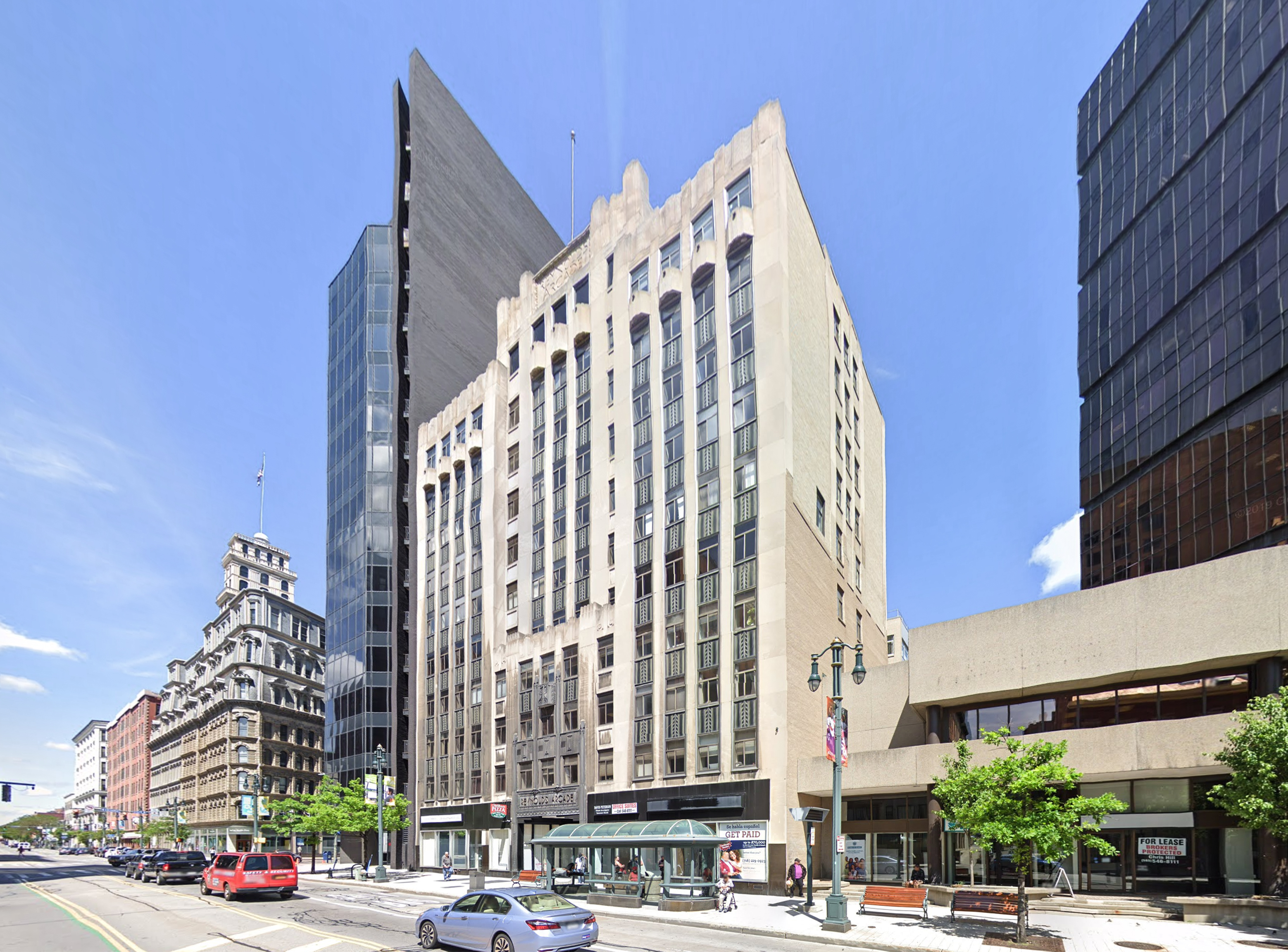The Reynolds Arcade Building is an Art-deco skyscraper designed by Gordon & Kaelber, and built between 1932 and 1933 in Rochester, NY.
Its precise street address is 16 E.Main Street, Rochester, NY. You can also find it on the map here.
The Reynolds Arcade Building is a structure of significant importance both for the city of Rochester and the United States as a nation. The building embodies the distinctive characteristic features of the time in which it was built and the Art Deco style. Because of that, the Reynolds Arcade Building was officially included in the National Register of Historic Places on October 4th 1985.
At the time of its completion in 1933 the Reynolds Arcade Building incorporated solutions that were quite advanced at the time, these included the acoustical treatment of ceilings to deaden noise and clatter. The building also incorporated air conditioning for its offices, which was a first for Rochester at the time.



